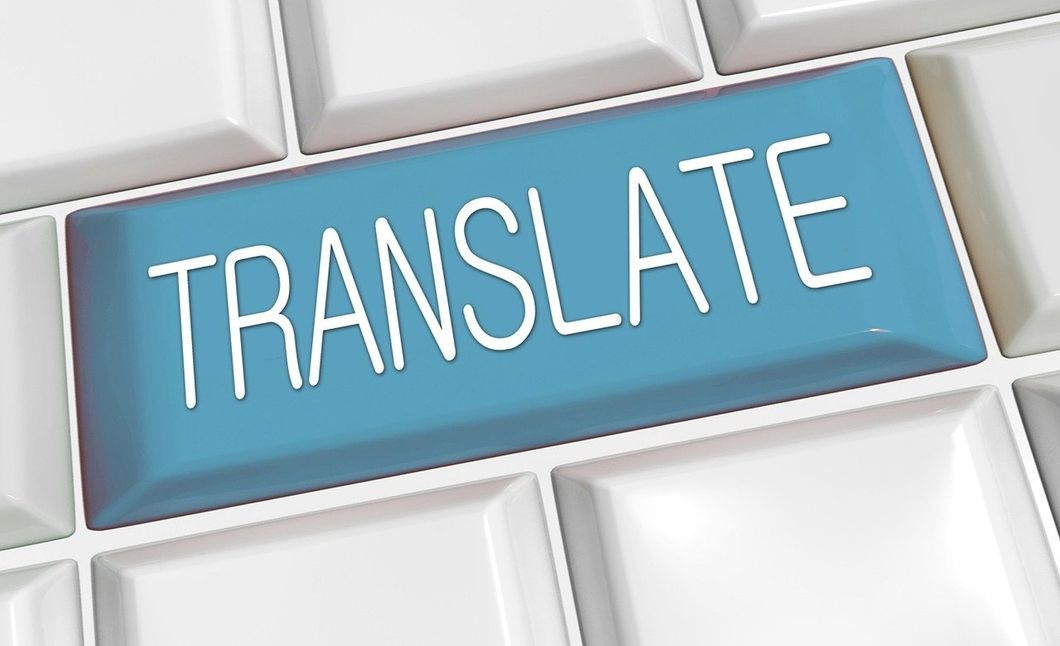After spending the whole day looking over writings from my Spanish 1 students that were very clearly Google translated, I wanted to give some tips for how to use Google Translate, and use it well. Every language teacher always says that Google Translate is not to be trusted, and it's not entirely true. Google Translate can be a great tool, but most high school Spanish students haven't figured out that putting a whole sentence in and letting it do the work for you, isn't the way to do it, so it has to be treated like the enemy. If you want to get caught, continue doing the same old thing. If you want to know how to cheat the system, take if from a Spanish teacher.
Trust that your teachers know what they're looking for
Your Spanish teacher knows the language they teach. They also know how much of the language you know. Some of the assignments I had used grammar topics that aren't even addressed until Spanish 3, and one used a grammar topic that I was supposed to teach, but we decided to cut because it was too hard to explain with distance learning.
Make sure your formatting matches
If you're copying and pasting something from another site, make sure that it matches with the other text in your document. I had many documents turned into me that had a gray highlight behind all of the words. It wasn't the most obvious thing, but it also was impossible to unsee once you noticed it.
If you don't recognize it, don't use it
When you're learning a foreign language, you can't learn everything at once. There are things that I have presented multiple times that my students can't tell me what it is, so there are things I know I haven't shown them, and there's no way for them to know what it means. If you just blindly copy and paste what Translate tells you, then you're going to be caught in your lie.
Honesty is the best policy
Your teachers expect you to need to look up new words. No one is saying that you should already know every single thing. A good way to cover your butt is to just say what you put in the translator. If you say "this is what I looked up, here's what it said it was" then it'll be a lot easier to forgive, and also, correct, if your translation is a little off track.
Don't expect that a whole paragraph is going to look right if you directly translate it
If you take huge chunks of text and translate it directly, you'll never get what you want to say. Some words in English have multiple meanings in other languages, and nine times out of ten, a translator won't pick the right version of the word, and if you just copy and paste everything, you won't find the weird word, but your teacher will.
Accept that your language skills are just different
Your language teachers know that it's hard to take a language that you're fluent in and bump it down to the basic stuff you've learned. It's hard to know that you have these complex thoughts, but sometimes don't have the words to describe it. Your teachers get stuck in the same situation from time to time. Instead of turning to google translate, just do what you can with what you've learned.
Double check your work
This goes for even if you don't use a translator. If you just submit something without looking at something twice, there are high odds that something is wrong and you didn't see it. If you use a translator, and you look at it again, you'll notice if something is wrong, or isn't something you've seen before. It's easy to avoid mistakes if you take a few extra minutes to check it.
If nothing else, make mistakes
If you refuse to actually do the work, the easiest way to trick your teacher into believing that you did the work yourself, is to make mistakes every so often. If you purposely mess up some things that you do in English and not Spanish, like putting adjectives in front of nouns. If you do things that a translator wouldn't mess up, but a Spanish learner would, it's easier to assume that you did the whole thing on your own.
















